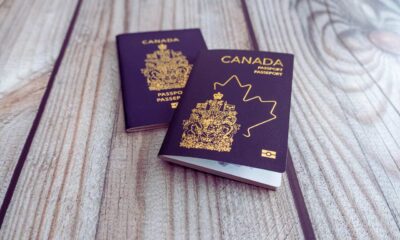Work in Canada
A Comparison of the Temporary Foreign Worker Program and the International Mobility Program

There are more than 100 alternatives available for foreign nationals who are interested in visiting Canada. The International Mobility Program (IMP) and the Temporary Foreign Worker Program (TFWP) are two broad programs that encompass several of these options. Although both the TFWP and the IMP are intended to support Canada’s economic development, their stated policy goals and eligibility standards differ.
The key distinctions between these two renowned Canadian work permit programs are listed below:
Goals/Intentions of the Program
TFWP: The main objective of the TFWP is to support the Canadian employment market by giving to engage foreign workers to address labour shortages in their industry when there aren’t any qualified Canadians available to fill labour gaps. The goal of this initiative is to support Canadian businesses that need it while also giving Canadians priority consideration when applying for open positions. The TFWP does not seek to offer Canadians living abroad reciprocal advantages similar to those it offers Canadian employers. Instead, the TFWP is concentrated on addressing local labour market demands for particular professions and locations.
IMP: In contrast, the IMP was established to “promote Canada’s broad economic, social, and cultural policy objectives [by allowing] foreign workers to enter Canada to strengthen bilateral and multilateral ties between Canada and the global community, as well as to promote the likes of arts, culture, sports, and religion in Canada,” according to the government. Additionally, by heavily basing its policy on multilateral and bilateral agreements with other nations, the IMP hopes to offer reciprocal benefits to Canadians living overseas (e.g., the Canada-United States-Mexico Agreement, or CUSMA).
Requirement of LMIA
TFWP: Employers must submit an LMIA application as part of the program. It’s crucial to remember that ESDC is in charge of the LMIA and IRCC is in charge of the work permit application that follows.
IMP: The International Mobility Program is LMIA-exempt; applicants attempting to work in Canada through this program are not required to complete it.
Administration
TFWP: TFWP is headed by ESDC and collaboratively managed by ESDC and IRCC.
IMP: It is completely led and governed by IRCC.
Work Permit
TFWP: In this scheme, temporary work permits are employer-specific, which means that foreign nationals applying for jobs are only allowed to work for that one particular firm.
IMP: Work permits issued under the IMP may be “open” or employer-specific. In other words, the applicant’s work visa may be connected to a single employer or allows them to work for any firm in the nation depending on the circumstances or arrangement they make.


























